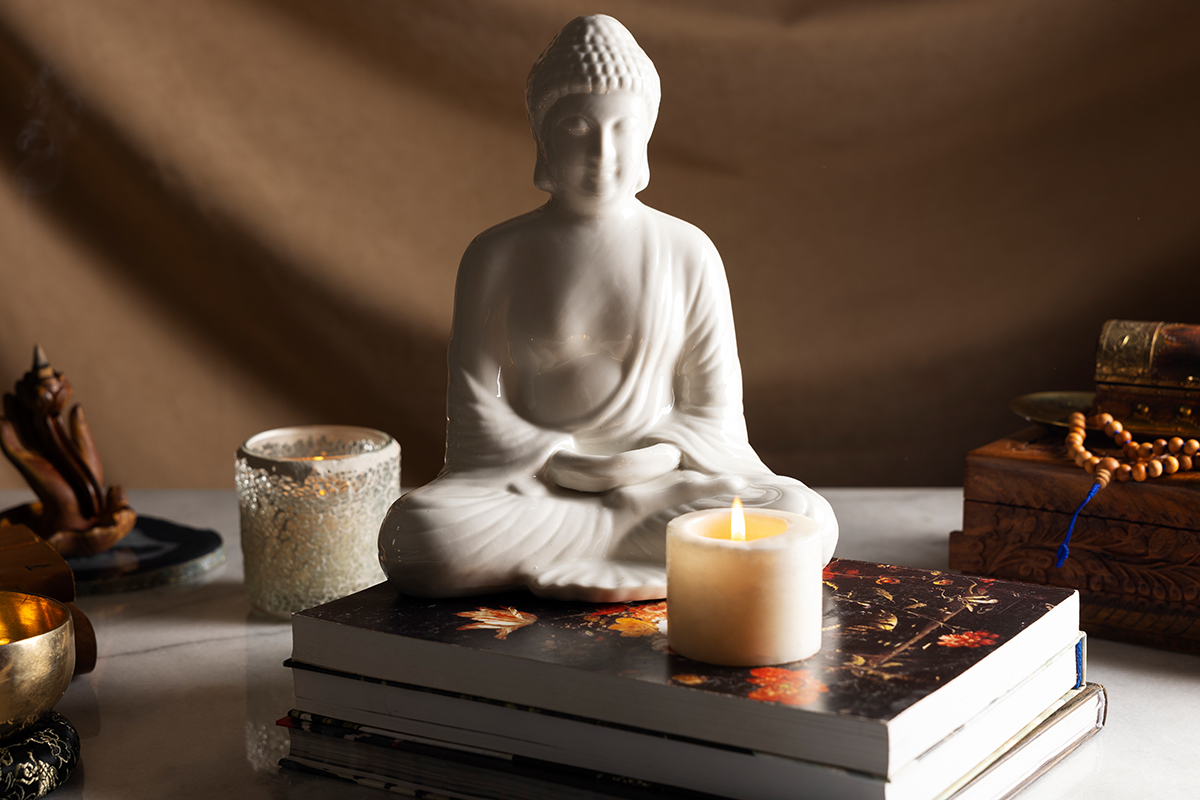In a world filled with stress, deadlines, and obligations, meditation has become an effective way to find calm and focus. The practice of meditation helps you relax, reduce anxiety, and improve your overall emotional well-being. Let’s explore how you can meditate at home without any special equipment or complex instructions.
Why Practice Meditation?
Meditation is known for its ability to positively impact mental and physical health. Psychologically, it helps improve emotional states, reduces stress levels, and aids concentration.
Emotions and Self-Confidence
Meditation has a positive effect on our brain: it increases serotonin, the happiness hormone, and reduces cortisol, the stress hormone. By practicing meditation, we learn to control our thoughts and emotions, becoming more resilient to stress and recovering more quickly from difficult situations.
For many, meditation becomes a way of understanding inner needs, strengthening self-confidence, and fostering a positive outlook on life. Through meditation, we gradually learn to find inner harmony and happiness that are independent of external circumstances.
How to Start Practicing Meditation at Home
Starting meditation at home is easy and requires no special equipment or skills.
Choose a Quiet Place
Find a quiet spot where you feel comfortable and will not be disturbed. This could be a corner of your bedroom, a couch, or a spot on the floor. It’s important to feel comfortable and fully immerse yourself in the process.
Sit Comfortably
You don’t have to sit in the lotus position to meditate; the main thing is to choose a comfortable position where your body is relaxed and your back remains straight. This could be a seated position on a chair or mat.
Set a Time for Your Practice
Start with 5-10 minutes a day. Set a timer so you don’t have to think about time. Gradually, as you feel more confident, increase the duration of your meditation to 20-30 minutes.
Focus on Your Breathing
Close your eyes and pay attention to your breathing. Inhale deeply through your nose and exhale slowly. Try to feel the air passing through your nose, filling your lungs, and then exiting. Keep your focus on your breath, and if thoughts arise, just let them go and return to your breathing.
These simple steps will help you begin meditating and develop initial skills in concentration and mindfulness.
Mindfulness Practice: Key Techniques
Mindfulness is the skill of being present, observing your thoughts, emotions, and surroundings without judgment. There are several simple mindfulness techniques you can integrate into your life.
Mindful Breathing
This technique is useful in moments of anxiety or worry. Sit or stand straight, take a few deep breaths in and out, focusing only on your breath. Try to feel how your body relaxes with each exhalation.
Body Scanning
Close your eyes and focus on each part of your body in turn, starting with your toes and moving up to your head. Feel any tension that may have built up and imagine it leaving with each exhale. This practice helps you relax.
Mindful Observation
Choose an object around you (such as a houseplant, cup, or candle) and study it closely for a few minutes. Try to notice its texture, color, and shape. This practice helps distract you from daily thoughts and become more present in the moment.
Tips for Regular Meditation and Strengthening Mindfulness
Maintaining a regular meditation practice at home can be challenging if you’re used to an active lifestyle. Create a schedule and stick to it. A regular meditation time will help form a habit.
Don’t try to meditate for too long at first. Start with a few minutes a day and gradually increase the time as you feel ready. Don’t expect immediate results; meditation requires time and practice.
If you find it hard to focus on your own, try using meditation apps that offer simple guides for beginners.
Remember, meditation and mindfulness are powerful tools that help achieve inner peace, improve mental and physical health.


